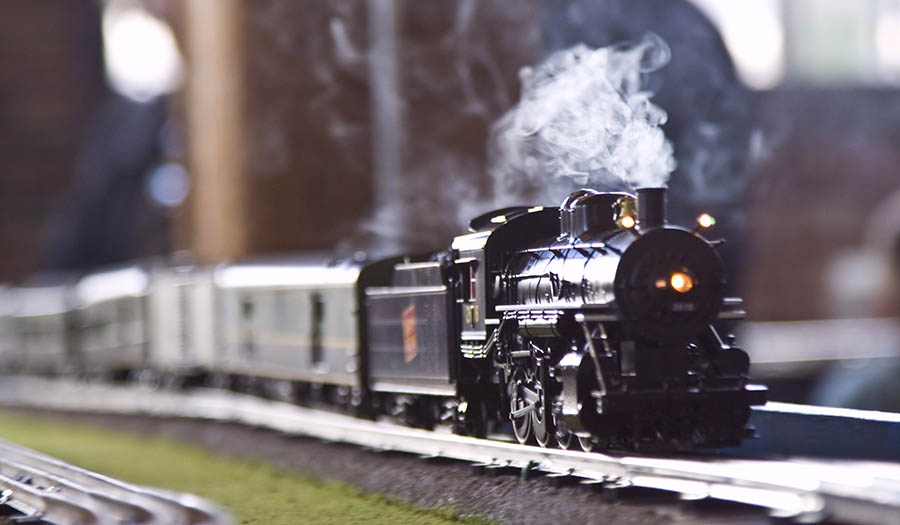Model trains have been around almost as long as actual trains. Boys and girls alike are fascinated with miniature engines, cars, and cabooses that glide swiftly on little tracks around little communities. Whether the locomotive is gaily traveling around the Christmas tree or chugging on a custom-made table in the basement, model trains have become a familiar hobby for many families.
The intent to build a model train set, along with all its parts, can be quite daunting. There are so many parts to the train set itself, along with the various tracks to assemble, and landscaping pieces to add. Starting such an endeavor takes research and a few helpful hints for the novice builder. Where does one begin, and what comes first? How big should the train be? Is there a noticeable difference between brands of trains and kinds of tracks? Thankfully, there’s plenty of information available online regarding this hobby, with frequently asked questions and guides for model-train lovers, as well as sites like LGB Trains which sell all kinds of trains and accessories.
If you’ve just invested in your first model train set, here are some things to know about setting up your track layout.

Consider Design
There are three major factors to consider when setting up your first track layout, and the first is design. This refers to how and where the tracks will be laid. There are many more aspects of building a model train, but design is one of the most important when beginning your first set.
Usually, your first model train set will travel in a simple loop. These tracks fit together like a puzzle, and they’re typically light enough to move around. A perfect example is the little train that circles the Christmas tree during the holidays. They’re not too difficult to put together, and they fit perfectly around the base of the tree.
However, for other kinds of model trains that do more than travel in circles, space and design are intricately involved. A certain amount of square footage is needed for each foot of track that’s laid out. If the train is large, the tracks will take up even more space, and if there are loops, even more area is required. You may also need space for other accessories like trees and scenery. Therefore, when deciding where to lay the tracks, make sure there is enough room for each piece to fit perfectly.
Design where your railroad will be first and how it will be laid out. Experiment with placing each track in its position before tacking anything down permanently. Be creative. Move things here and there. Imagine how it will look when it’s finished and your train is moving. Be inventive and happy with the space available, because once the track is set, it’s difficult to shift.
Ensure Compatibility
The second aspect to consider is compatibility, and the sizes of the pieces. It’s crucial you make sure the train and its tracks are extremely compatible and of the same gauge. When dealing with model trains, there are particular codes that represent different parts of the tracks. Each size of a track is coded according to its purpose. That’s what some of those numbers refer to on the sets.
Larger codes generally are used for the mainlines on a train track, while smaller ones are for the tracks which branch out. Gauges are vital, too, because they represent the distance between the rails on model tracks. If one piece of track is of a different gauge to another, the train will falter and possibly fall off. Pay close attention to the gauge count when adding various tracks to your model trains. The smallest difference can be detrimental. It may seem overwhelming but matching and coordinating all the codes and gauges is essential for your hobby to run smoothly.

Play Around With The Power Source
For a model train to run, it needs power. Basic model train sets generally come with a basic power source for regular usage; however, this soon grows old and boring. When dealing with the movement of a model train, take into account the amps and volts necessary for such an endeavor. If you want the train to do more than just run around in slow circles, it needs to have a large number of amps. Volts will determine the volume of power that goes to your train. By changing the voltage for your train, you can change how fast or slow it goes.
Conclusion
Model trains are so much more than games. They’re an intricate hobby that requires patience and commitment. In the world of model trains, there are so many variables. From train sizes to train gauges, track types, track lengths and purposes, it’s intimidating for beginners to even know where to begin. The key here is to do your research, gather all your materials, and enjoy the ride—literally.

